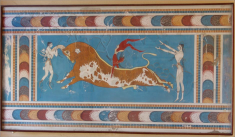Speaker
Description
Direct photons have long been considered as golden probes to study the properties of the Quark Gluon Plasma (QGP). They do not interact strongly with the medium and are produced at all stages of the collision, hence carrying information of the entire evolution of the system to the detectors. The PHENIX experiment discovered a large excess of low $p_{T}$ photons in Au+Au collisions at $\sqrt{s_{NN}}$ = 200 GeV compared to reference p+p collisions, which has been interpreted as thermal radiation from the QGP and hadron-gas medium. At the same time, the excess photons show a large elliptic and triangular
flow. These results are challenging for the current theoretical models to describe simultaneously, because on one hand the large yield suggests early stage emissions when the temperature is high, on the other hand the large anisotropy is expected to be formed only at later stages of the collision when the system has cooled off and the thermal photon production rate is expected to be smaller.
Using a variety of high statistics datasets across different collision systems and energies in PHENIX, simultaneous analyses of yields and azimuthal asymmetries of direct photons with higher precision are performed to provide more constraints to the theoretical calculations. In this talk, we will present recent results on low $p_{T}$ direct photons measured via their external conversions to electron-positron pairs, including new results from Au+Au at lower beam energies of 39 and 62.4 GeV, as well as Cu+Cu at 200GeV.
| Topic: | Topic: Heavy Ion Collisions and Critical Phenomena |
|---|
